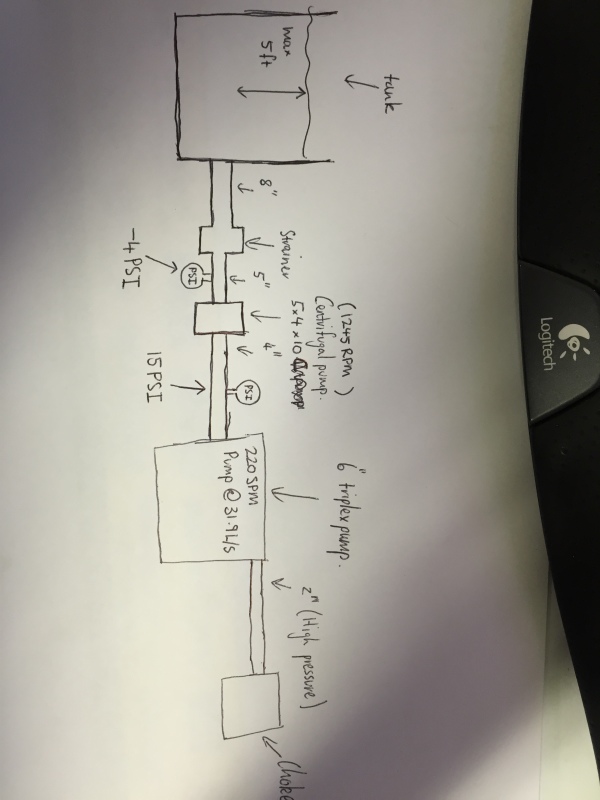Hi,
I am trying to size a booster pump to drive 25-30 PSI into a triplex pump. I have run a test on the current configuration and the data can be seen in the picture below. I have deadheaded the booster pump without the triplex pump and it runs within spec. Then when i run the booster pump and triplex pump i cannot work out why the booster pump discharge pressure is so low. I assume the discharge flow from the booster pump would be the same as the triplex (115 m3/h) so from the curve i should be seeing discharge pressures of 15m(21PSI) @ approximately 1245 RPM but am only reaching 14-15PSI. Any explanations? How does the suction from the triplex affect the discharge of the booster pump? I have run the same set up using a different pump and get the same result. I have also attached the curve for the booster pump. Any feedback would be appreciated.
Thanks
Lukas


I am trying to size a booster pump to drive 25-30 PSI into a triplex pump. I have run a test on the current configuration and the data can be seen in the picture below. I have deadheaded the booster pump without the triplex pump and it runs within spec. Then when i run the booster pump and triplex pump i cannot work out why the booster pump discharge pressure is so low. I assume the discharge flow from the booster pump would be the same as the triplex (115 m3/h) so from the curve i should be seeing discharge pressures of 15m(21PSI) @ approximately 1245 RPM but am only reaching 14-15PSI. Any explanations? How does the suction from the triplex affect the discharge of the booster pump? I have run the same set up using a different pump and get the same result. I have also attached the curve for the booster pump. Any feedback would be appreciated.
Thanks
Lukas


